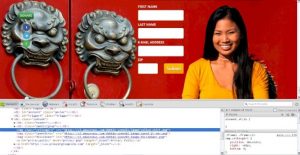Becoming a freelancer can be exciting, allowing you to set your own schedule and rates and also choose who you want to work with.
Essentially, you become your own boss.
Accompanying this new way of working, however, are tasks you may not have been responsible for before, including tracking, filing, and paying your own taxes.
As a freelancer, you’re obligated to pay not only on the federal and state level but also what’s known as self-employment taxes.
Whether you pursue a freelance marketing career or any one of the various other freelance opportunities today, you need to be aware of how to prepare for and pay all of these required taxes.
So, if you are just now starting out as a freelancer or have been at it a few years but still not clear on what requirements are in place, here are the things you need to know about freelancing taxes.
What is Self-Employment Tax?
If you are currently a freelancer, the Internal Revenue Service (IRS) classifies you as self-employed as long as you make over $400 per year from one client or more.
In addition to paying your federal and state income taxes, as a self-employed freelancer, you are also responsible for a 15.3% self-employment tax.
This self-employment tax includes a 12.4% Social Security tax along with a 2.9% Medicare tax, amounts normally withheld by an employer.
To help calculate what your self-employment tax will be, follow these steps:
- Determine your taxable income with this formula:
(Gross income – your expenses) x 0.9235 - Your self-employment tax will be 15.3% of that taxable income.
When Exactly Do Freelancers Need to Pay Taxes?
While you may be used to paying one lump sum on April 15th every year, freelancers are expected to take a different course.
Any freelancers expecting to owe the IRS $1,000 or more for the year in taxes are to calculate and pay estimated quarterly income tax.
In other words, you need to estimate your earnings for the year, then separate the tax burden on that amount into four equal parts.
It’s essential that you calculate these four payments as accurately as you possibly can so as to avoid paying any remaining balance with your annual filing. Also, if you pay too little in estimated taxes, the IRS may charge you an additional fee.
On the other end of this process, if you pay more than you end up owing, the difference will be refunded upon filing your annual tax return.
To help you calculate these estimated quarterly taxes, look for the IRS Form 1040-ES and follow the instructions.
Your first estimated quarterly tax is due on April 15th, at the same time as your annual filing for the previous year. The following three are due on June 15th, September 15th, and January 15th.
The Forms You Need for Freelance Taxes
Whether you are new to the freelancing work style or consider yourself a pro already, understanding what requirements are in place is a good start.
Specific forms are required when it comes to filing freelance taxes, and these include:
- Form 1040 — U.S. Individual Income Tax Return
- Form 1040, Schedule C – Profit or Loss from Business: Schedule C is where you, as a freelancer, will report all of your expenses and income. You’ll need to enter information found on 1099s from clients and from your own accounting records.
- Schedule SE – Self Employment Tax: Schedule SE is where you will calculate your self-employment tax.
- Form 1040-ES – Estimated Tax: Form 1040-ES is for determining your quarterly estimated taxes for the coming year and to make the first payment.
- Form 1099s (showing income received)
- Form 1099-MISC: document sent to you by your clients.
- Form 1099-K: document sent for payments above $600, including from third parties such as PayPal, Venmo, or Zelle.
What are You Able to Deduct in Freelance Taxes?
Being out on your own as a freelancer will likely require business expenses that wouldn’t be required of a typical employee.
The IRS recognizes this type of situation and allows you to take tax deductions for certain expenses, as long as they fall under the category of “ordinary and necessary” to the operating of your freelancing business.
You will need to keep track of your expenses throughout the year, including compiling receipts. Just be sure to keep your work and personal expenses separate and document everything relating to your freelance business.
Common deductions for freelancers include:
Home Office Deduction
The IRS has specific guidelines for what constitutes a home office. It must be a designated space for your freelance work only and not used for other household purposes.
Along with the square footage, you may be able to include a portion of your utilities, internet, and rent expenses.
Office Supplies and Equipment
Freelancers are responsible for buying their own office supplies and necessary equipment, such as a laptop and printer. These are usually deductible items.
Business Formation Costs
If you’ve decided to formally form a business entity, such as an LLC, the expenses for doing so are legitimate deductibles.
Travel expenses
Travel expenses include mileage and lodging. If you travel more for your work, you may also be able to deduct other vehicle expenses.
Business Meals
You can claim 50% of the costs associated with business meals.
Advertising and Marketing
Advertising and marketing expenses, such as business cards and website creation, can be deductible.
Other potential deductible expenses include:
- Software
- Training and Education Costs
- Professional Memberships
- Licenses and Certifications
- Legal and Professional Services
Remember, you are a business, even if a business of one. As such, you have expenses to keep your business running. These expenses can become deductions that lessen your yearly tax burden.
Freelancing Taxes: How to File Taxes as a Freelancer
As a freelancer, you have more than one option when it comes to how to file your taxes.
You can calculate and file them on your own, use an online tax filing software, rely on a combination of those two, or seek the help of a professional tax preparer.
Essentially, you’ll need to do the following in preparation and execution.
1. Compile all 1099s from clients and your personal accounting records
Any client who paid out in excess of $600 to you for your freelance services should provide you with a 1099-MISC form.
For payments made through third-party services like PayPal or Square, you should also receive a 1099-K. You may need to print this out yourself from the merchant’s dashboard.
Your personal accounting records should contain receipts (paper and online order receipts).
They should also include any income you received throughout the tax year that does not show on a 1099-MISC or 1099-K.
2. Determine your net income with Schedule C
With your 1099s and accounting records in hand, determine your net income with the help of Schedule C.
This form takes you through the process of adding up total income, entering all expenses, and calculating your taxable net income.
3. Calculate your self-employment tax
Complete form Schedule SE to determine what your self-employment tax will be.
4. Complete and file your IRS Form 1040
You will use the information determined in the previous steps to help complete your Form 1040. Once completed, you can file it through your tax software, directly to the IRS online, by way of your tax preparer, or print and mail.
5. File and pay Quarterly Estimated Tax Payments
If applicable, use Form 1040-ES to calculate your quarterly estimated tax payments for the coming year and submit the first payment.
6. Confirm any State. Local, or Sales Tax Requirements
In addition to filing your federal income tax forms, confirm whether or not you also owe state, local, and sales taxes.
Each state and local location differs in this aspect, and if you do owe anything, pay this now as well. Here are a few hints to help:
- Most states maintain their own income taxes for freelancers, so check with your state tax department for confirmation and forms to file.
- Approximately 5,000 counties, cities, and other jurisdictions impose separate income taxes. (e.g., New York City). Check the local government website for guidance and related forms.
- In some areas, a sales tax is required for freelance businesses. Once again, check your local government website for confirmation.
You may also be interested in these articles:
Wrap Up
Being your own boss brings with it tasks you might not expect, such as paying your own taxes.
Yet, preparing and paying freelancing taxes doesn’t have to be difficult or stressful. The more you as a freelancer know, and the more you prepare, the less stress arrives when it is time to file.
The best way to plan is to make it a habit to document every expense, keep every receipt, and also track all forms of income coming in so you can fill out the required forms in less time.
To help you improve and make the most of your business, also include these best freelancer tools!








